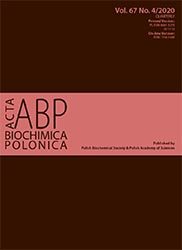Cholesterol (Blood lipid) lowering potential of Rosuvastatin chitosan nanoparticles for atherosclerosis: Preclinical study in rabbit model
Abstract
Atherosclerosis is the condition of narrowing of arteries due to plaque buildup on the artery walls. Aortic valve calcification (AVC) is one of the reasons of atherosclerosis which leads to narrowing at the opening of the aortic valve which is commonly referred as Aortic valve stenosis (AS). The Rosuvastatin-chitosan (ROS-chitosan) nanoparticles were prepared using ionotropic gelation method. Nanoparticulate formulation was optimized by 3 factor, 2 level full factorial design to find the effect of independent variables on particle size and percentage encapsulation efficiency. Particle size, encapsulation efficiency, scanning electron microscopy, in vitro drug release of nanoparticles was determined. The adult male rabbit of 4–5 months old were chosen for the study. Hypercholesterolemia was induced in experimental animals by administering diet with Cholesterol and Cholic acid (1.25 % and 0.5% respectively.) Blood lipid profile, interleukin 6 levels and histopathological study was performed. Rosuvastatin was found to be significantly effective in lowering the blood lipid levels. It helps to attenuate atherosclerosis as well as calcification of various valve tissues in experimental animals.
Acta Biochimica Polonica is an OpenAccess quarterly and publishes four issues a year. All contents are distributed under the Creative Commons Attribution-ShareAlike 4.0 International (CC BY 4.0) license. Everybody may use the content following terms: Attribution — You must give appropriate credit, provide a link to the license, and indicate if changes were made. You may do so in any reasonable manner, but not in any way that suggests the licensor endorses you or your use.
Copyright for all published papers © stays with the authors.
Copyright for the journal: © Polish Biochemical Society.


